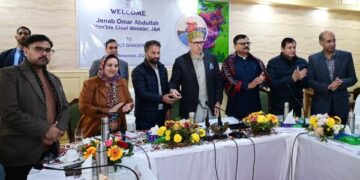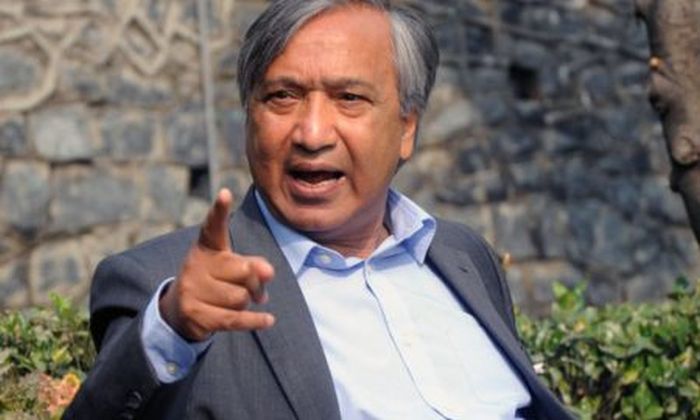Srinagar: The Geological Survey of India (GSI), Ministry of Mines, Government of India, celebrated the 4th Edition of UNESCO International Geodiversity Day 2025 and the 9th Edition of International Geo-Ethics Day 2025 on October 16th, 2025, with the workshop theme “Harnessing Geodiversity for Geoconservation”.
On this occasion, the Director General of GSI passed the resolution to declare two new Geo-heritage sites of India, including one from UT: J&K. The new entrant in the Geo-heritage list of India from UT: J&K is the famous Guryul Ravine Permian-Triassic Boundary section from Khonmoh, Srinagar.
The Director General, GSI emphasized on the significance of Geo-heritage sites and the necessity to preserve them. Considering the global importance of the Guryul Ravine Geological section, the DG GSI declared this site as the National Geo-heritage site of National importance along with fossiliferous supplementary sections near Barus, Mandhakpal and Pastun area of Pulwama district, J&K.
The Guryul Ravine Permian-Triassic Boundary section, Srinagar, J&K, shows a continuous sedimentary succession of about 252 million years ago (25.2 Crore), during which a severe mass extinction wiped out most of life on Earth – 90% of sea creatures and 70% of land life. This event, known as the “Great Dying” or Late Permian Mass Extinction (LPME), is recorded in ancient rocks of Guryul ravine, Khonmoh, with abundant fossils, marking the transition from the Paleozoic to Mesozoic Era, with minimal life in the early Triassic age at the Permian-Triassic Boundary (PTB).
The Guryul Ravine Geological section represents one of the few known complete PTB sections in the world. It hosts multiple mega fossil horizons of Bryozoa, Brachiopoda, Bivalve, Gastropoda, Ammonoids and conodonts, which are important for understanding the greatest biological revolution and past climate changes of Earth, with each rock layer here telling a story worth preserving.
In commemoration of the declaration of Guryul Ravine Geological section as the National Geoheritage site of national importance, the GSI, State Unit: J&K, and Ladakh under the leadership of Dr. P. S. Misra, Deputy Director General and Abdul Qayoom Paul, Director, GSI, Kashmir office, held an awareness and Swatcchta Hi Sewa (SHS) campaign along with plantation drive at the declared site.
The other participants from GSI include Pankaj Kumar, Senior Geologist & Incharge Park & Museum Division, Shri Zahid Majeed, Senior Geologist, along with all geoscientists from the GSI Kashmir office.
The declaration ceremony and SHS campaign witnessed a collaborative effort for public outreach, bringing together the personnel from Geological Survey of India (GSI), the Department of Geology and Mining (DGM), the UT, J&K, Forest and wildlife departments, the UT: J&K, Local administration officials, representatives from academic institutions, NGOs, local colleges, schools and the general public.
An infographic signboard of the National Geoheritage site of Guryul Ravine Permian-Triassic Boundary Section was also installed during the campaign.




